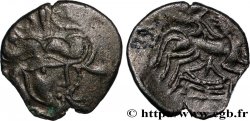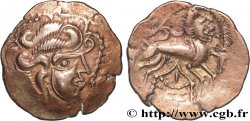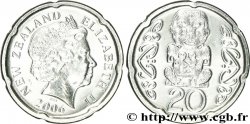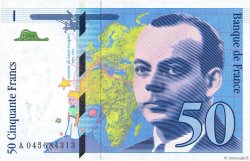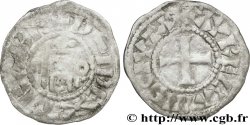Live auction - bga_507497 - GALLIA - ARMORICA -OSISMII (Area of Carhaix - Finistère) Statère composite en bas électrum, à la chevelure rayonnante, DT. 3625
得先注册又得到批准才可以报价。为了报价注册. 客户应该得到公司允许,那种过程需要 48 个小时。别等出售结束那一天才登记。您报价的话等于您赞成买那物品,而且按« 保价 » 证明您接受 cgb.fr 因特网拍卖使用法.
报价时只可以出全数值欧元总额。物品描述也说明销售结束时间,结束后出价都不会生效。 报价命令转达有时变动,等到最后秒钟增加否决的可能会。想多了解的话请注意 因特网拍卖常问
最高出价方将支付18%的不含税的拍卖费用
最高出价方将支付18%的不含税的拍卖费用
| 估算 : | 6 000 € |
| 价格 : | 3 800 € |
| 最高出价 : | 3 800 € |
| 拍卖结束日期 : | 04 December 2018 15:08:30 |
| 竞拍人 : | 1 竞拍人 |
种类 Statère composite en bas électrum, à la chevelure rayonnante, DT. 3625
日期: c. 80-50 AC.
铸币厂名称/城市 Brest (29)
材质 electrum
直径 19,5 mm
模子方针 9 h.
重量 7,13 g.
稀少度 R3
关于品相的说明
Exemplaire dans un état de conservation remarquable pour le type ! Monnaie complète des deux cotés. Joli droit. La monnaie a été nettoyée anciennement
正面
正面的文字 ANÉPIGRAPHE.
正面的说明书 Tête à droite, la chevelure rayonnante.
背面
背面的文字 ANÉPIGRAPHE.
背面的说明书 Cheval galopant à droite avec un triangle au-dessus de la croupe ; un buste humain droite, entre les jambes du cheval.
评论
L’attribution du bga_228343 (classé Namnète en accord avec le Nouvel Atlas) nous semble désormais à revoir en faveur des Osismes.
Cette série est bien connue, mais ses spécimens semblent peu nombreux ! Dès 1873, E. Hucher publie le dessin d’un statère de cette série (Tome I, fig. n° 87) qui serait celui du MAN. Bien que l’iconographie s’en distingue nettement, il était alors associé aux monnayages pictons et santons, probablement en rapport avec la facture et le type de métal utilisé. L’exemplaire de la BN est indiqué comme provenant de la Loire à Angers (Maine-et-Loire).
Bien que très rare, on peut remarquer que le petit buste humain à droite entre les jambes du cheval (probablement une dégénérescence de l’hippophore) est une constante alors que le triangle au-dessus de la croupe du cheval n’est pas systématique et il en va de même pour la rouelle devant le poitrail
Toutes variantes confondues, ce statère serait le cinquième exemplaire publié, après celui de la BN qui illustre le Nouvel Atlas (DT. 3625), l’exemplaire du MAN, décrit comme “inaccessible”, le bga_228343 (qui, bien que dans un piètre état, a le mérite d’exister) et enfin le bga_325312, jusqu’ici considéré comme le plus bel exemplaire !
.
The attribution of bga_228343 (classified as Namnete in accordance with the New Atlas) now seems to us to be reviewed in favor of Osisms.
This series is well known, but its specimens seem few in number! As early as 1873, E. Hucher published the drawing of a stater from this series (Volume I, fig. No. 87) which would be that of the MAN. Although the iconography is clearly different, it was then associated with Picton and santon coinage, probably in relation to the manufacture and the type of metal used.. The BN example is indicated as coming from the Loire in Angers (Maine-et-Loire).
Although very rare, we can notice that the small human bust on the right between the horse's legs (probably a degeneration of the hippophore) is a constant while the triangle above the horse's rump is not systematic and the same goes for the wheel in front of the chest. All variants combined, this stater would be the fifth published example, after that of the BN which illustrates the New Atlas (DT. 3625), the MAN example, described as “inaccessible”, bga_228343 (which, although in a poor state, has the merit of existing) and finally bga_325312, until now considered the most beautiful example!
Cette série est bien connue, mais ses spécimens semblent peu nombreux ! Dès 1873, E. Hucher publie le dessin d’un statère de cette série (Tome I, fig. n° 87) qui serait celui du MAN. Bien que l’iconographie s’en distingue nettement, il était alors associé aux monnayages pictons et santons, probablement en rapport avec la facture et le type de métal utilisé. L’exemplaire de la BN est indiqué comme provenant de la Loire à Angers (Maine-et-Loire).
Bien que très rare, on peut remarquer que le petit buste humain à droite entre les jambes du cheval (probablement une dégénérescence de l’hippophore) est une constante alors que le triangle au-dessus de la croupe du cheval n’est pas systématique et il en va de même pour la rouelle devant le poitrail
Toutes variantes confondues, ce statère serait le cinquième exemplaire publié, après celui de la BN qui illustre le Nouvel Atlas (DT. 3625), l’exemplaire du MAN, décrit comme “inaccessible”, le bga_228343 (qui, bien que dans un piètre état, a le mérite d’exister) et enfin le bga_325312, jusqu’ici considéré comme le plus bel exemplaire !
.
The attribution of bga_228343 (classified as Namnete in accordance with the New Atlas) now seems to us to be reviewed in favor of Osisms.
This series is well known, but its specimens seem few in number! As early as 1873, E. Hucher published the drawing of a stater from this series (Volume I, fig. No. 87) which would be that of the MAN. Although the iconography is clearly different, it was then associated with Picton and santon coinage, probably in relation to the manufacture and the type of metal used.. The BN example is indicated as coming from the Loire in Angers (Maine-et-Loire).
Although very rare, we can notice that the small human bust on the right between the horse's legs (probably a degeneration of the hippophore) is a constant while the triangle above the horse's rump is not systematic and the same goes for the wheel in front of the chest. All variants combined, this stater would be the fifth published example, after that of the BN which illustrates the New Atlas (DT. 3625), the MAN example, described as “inaccessible”, bga_228343 (which, although in a poor state, has the merit of existing) and finally bga_325312, until now considered the most beautiful example!






 对产品描述纠错
对产品描述纠错 打印
打印 分享我的选择
分享我的选择 提问
提问 Consign / sell
Consign / sell
 产品介绍
产品介绍

